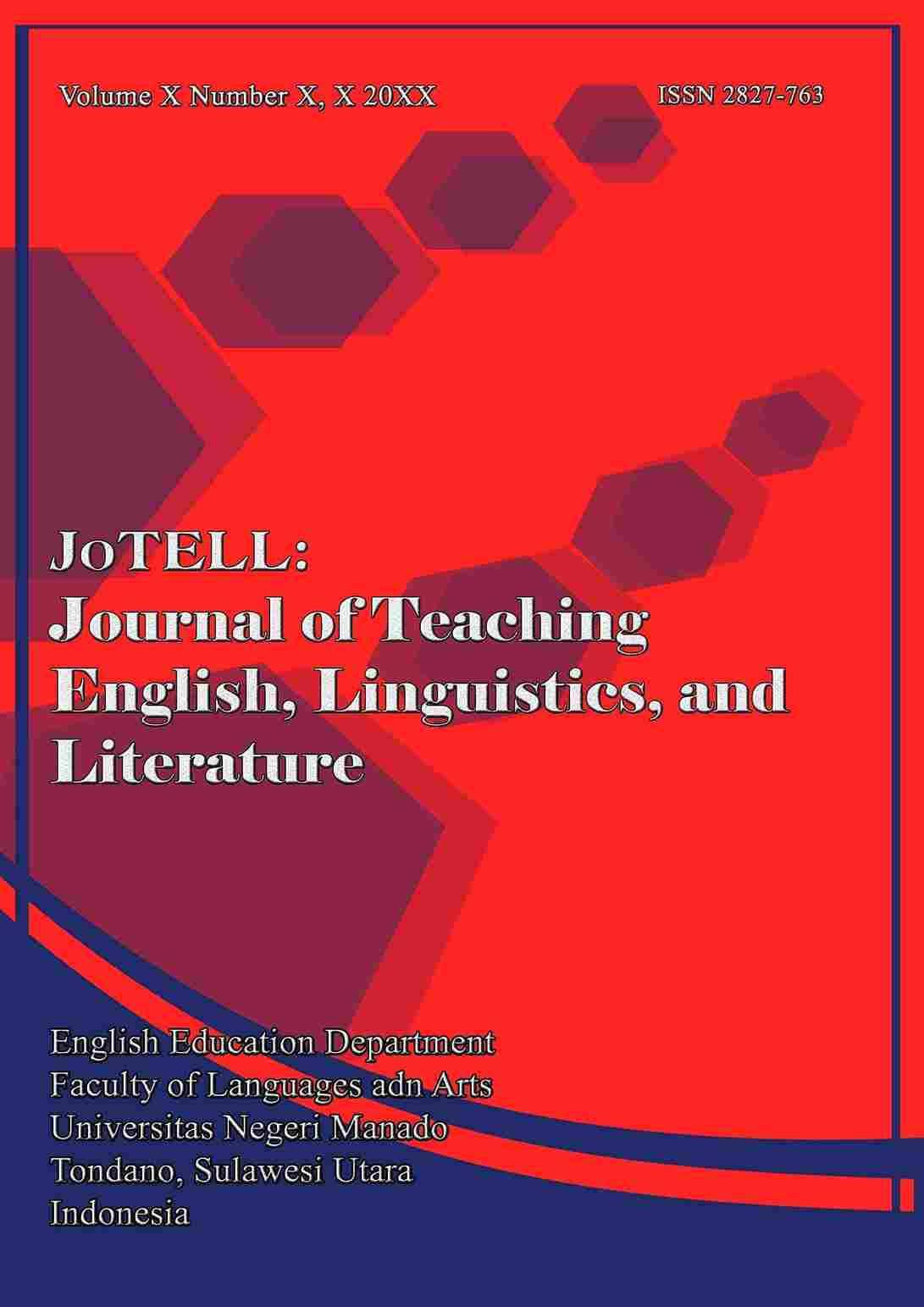AN ANALYSIS OF CODE-MIXING IN FEMALE DAILY NETWORK VIDEO BLOG
DOI:
https://doi.org/10.36582/jotell.v2i5.6152Keywords:
Code Mixing, Sociolinguistics, Female Daily Network, Video BlogAbstract
The aim of this research is to investigate the use of the type and forms code-mixing. To accomplish this investigation, which is supported theory from expert, by using internet platform media and the object as shown on the Female Daily Media blog YouTube channel. Descriptive quantitative is the method used in this study and the data collection instrument uses observation techniques. The results of this study showed that these two phases dominantly using a single word founded in utterances. The researcher concluded in this study that in the three groups of code-mixing forms, the use of single words was most common in mixed forms where the combined usage of foreign language words was more dominant. It is our mission that this research will serve as a resource for future researchers who will be interested in developing new phenomena and accurate data in the application of English or other foreign languages.
References
Bogdan, R.C and Biklen K.S (1992). Qualitative Research for Education: An Introduction to Theory and Methods. London: Allyn and Bacon,Inc. 28.
Cresswell. (2013). Reserachmdesing 5Thmedition. In Journal of Chemical Information and Modeling (Vol. 53, Issue 9).
Kridalaksana, H. (1993). Kamus Linguistik . Jakarta: Gramedia Pustaka Utama
Kumayas, T., & Lengkoan, F. (2023). The Challenges of Teaching Grammar at the University Level: Learning From the Experience of English Lecturer. Journal of English Culture, Language, Literature and Education, 11(1), 98-105.
Liando, N. (2013). Bilingual and Regular Class Students’ Attitudes Towards English. Litera, 11(2). https://doi.org/10.21831/ltr.v11i2.1068
Liando, N. V., Tatipang, D. P., & Wuntu, C. N. (2023). First Language Interfere in EFL Classes: Revealing Students’ Perspectives and Teachers’ Reasons in ELL. REiLA: Journal of Research and Innovation in Language, 5(1), 77-88.
Muysken, P. (2000). Code-mixing, bilingual speech and language change. Bilingual Speech_ A Typology of Code-Mixing, 1995, 250–262.
Robert Bogdan, S. K. (1992). Qualitative Research for Education. United States of America : Pearson Education Inc.
Sugiyono. (2011). Metode Riset dan Kualitatif . Bandung: R&D.Alfabeta .306
Spolsky, B. (1998 ). Sociolinguistics . Oxford University Press .
Endriani S, T. M. (2021). An Analysis of English Code Mixing used by Agnez Mo. 95.
Wardaugh, R. (1986). An Introduction to Sociolinguistic Second Edition. Massachucetts:: s Blackwell Publisher
Downloads
Published
How to Cite
Issue
Section
License
Copyright (c) 2023 JoTELL : Journal of Teaching English, Linguistics, and Literature

This work is licensed under a Creative Commons Attribution-ShareAlike 4.0 International License.












